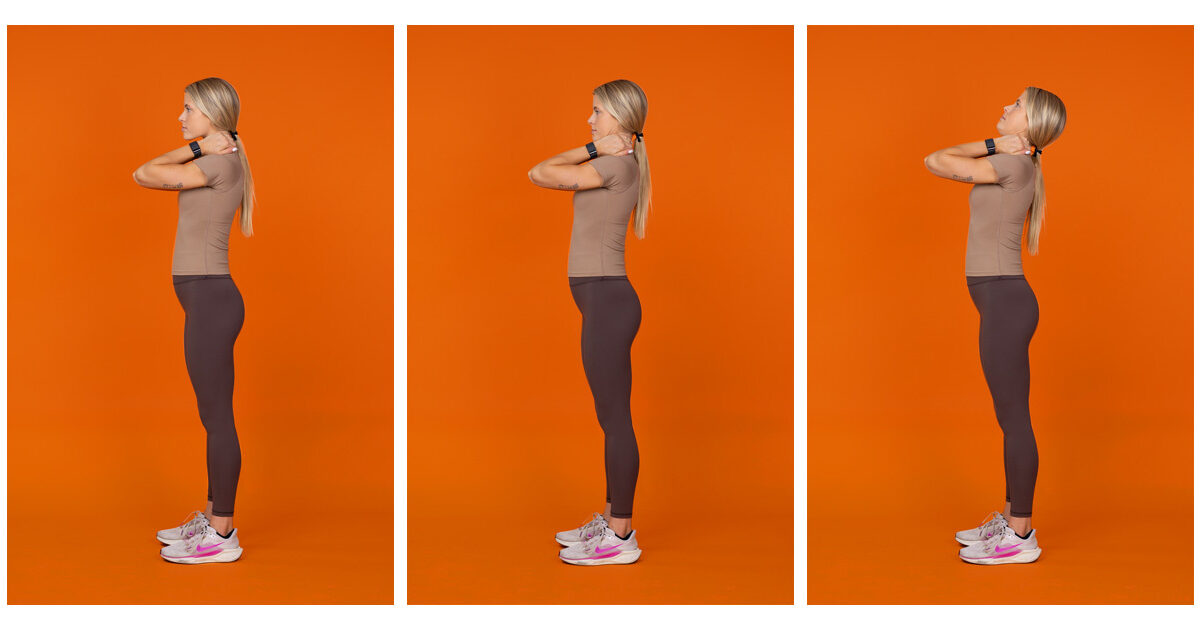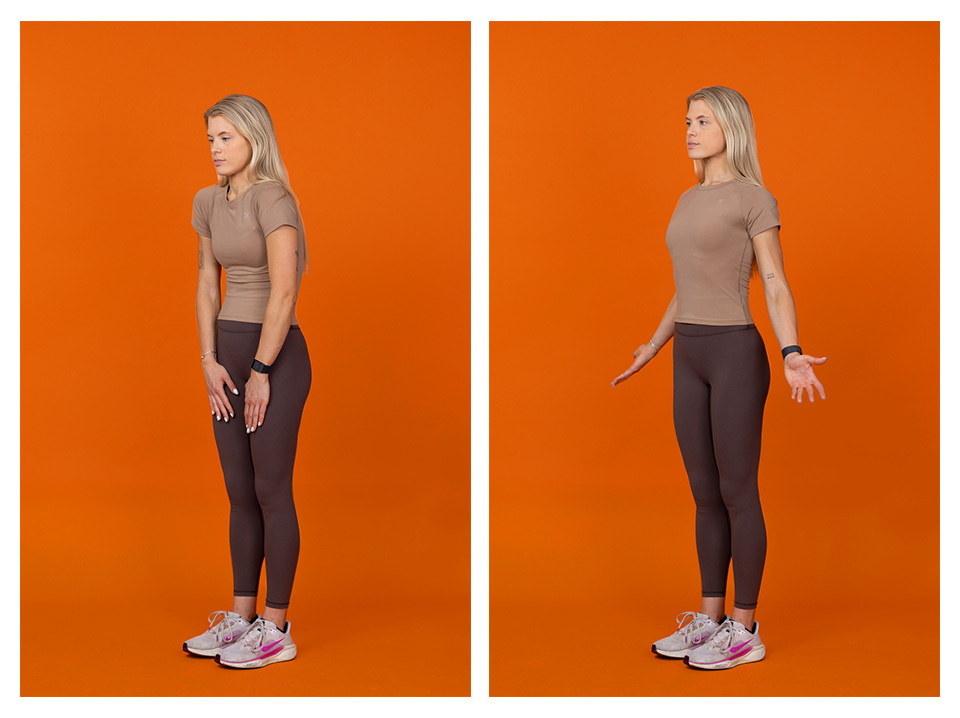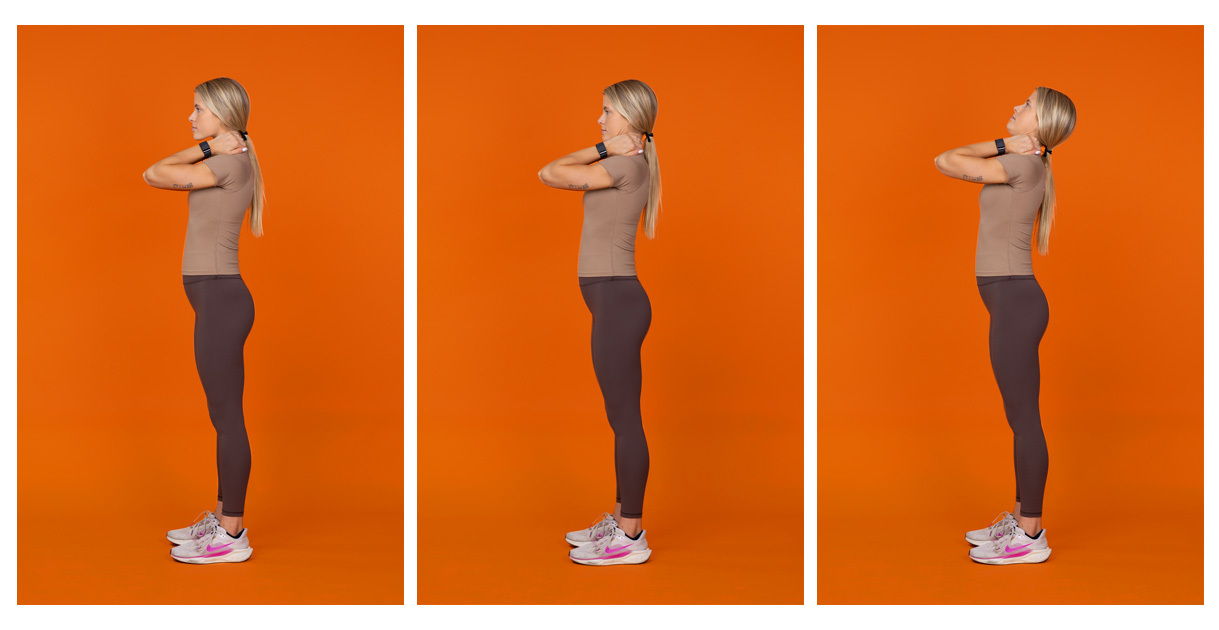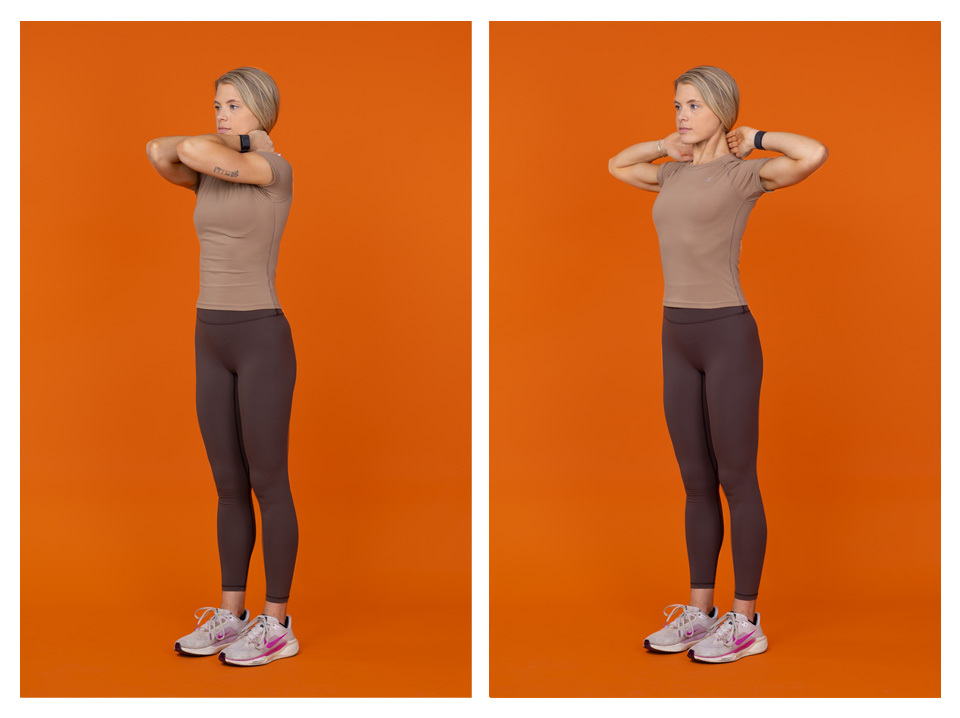Slouch Less, Feel Better: Understanding Tech Neck
UT Health Austin chiropractor breaks down how screen time can take a toll on your posture and how to prevent neck pain
Reviewed by: Sylvia Deily, DC, Cert MDT
Written by: Kaylee Fang

If you’ve ever noticed stiffness in your neck or shoulders after a long day on your phone or computer, you’re not imagining it. “Tech neck,” a posture issue caused by prolonged screen time, is more common than ever, and it can have a lasting impact on your health.
Whether you’re texting, scrolling social media, or binge-watching your favorite shows, tech neck can develop gradually. Over time, this seemingly harmless habit may lead to postural changes, chronic tension, and pain.
Here’s how to recognize tech neck, what causes it, and what you can do to stay healthy in a screen-centered world.
What Is Tech Neck?
Tech neck refers to pain or discomfort in the neck and upper spine caused by frequent screen use. It affects the muscles, tendons, and ligaments in the cervical spine, often leading to tightness, headaches, or even tingling in the arms and hands.
“Tech neck is a type of postural pain that occurs when your head is no longer balanced over your spine,” explains Sylvia Deily, DC, Cert MDT, a licensed chiropractor in UT Health Austin’s Back and Neck Pain Center within the Musculoskeletal Institute. “Bending your head forward for long periods, rather than allowing movement to be shared through the upper back and shoulders, adds strain to the neck. Without support from the rest of the trunk, this uneven load increases pressure, often leading to chronic soreness and stiffness.”
Causes of Tech Neck
<br>Several common habits can contribute to tech neck:
- Poor posture: Digital devices often pull you into a slouched, head-forward position. “Ideally, your body should align like a stack of blocks — pelvis, rib cage, shoulders, neck, and head — while maintaining its natural ‘S’ curve,” says Deily. “When you fall into a ‘C’ curve, stress increases in the neck, upper back, and even lower back.”
- Muscle fatigue: Staying in one position too long can exhaust your muscles. “Anytime physical demands exceed what your body can handle, muscles feel overworked,” Deily notes. “Without movement or breaks, they become fatigued from continuously supporting the head.”
- Structural changes: Poor posture over time can reshape the body, causing rounded shoulders and neck misalignment.
- Emotional stress: “Deadlines, frustrating content, and even doomscrolling can affect more than just your mood,” says Deily. “Emotional stress changes your muscle tone — often pulling you into a tense, protective posture.”
Symptoms to Watch For
If your neck or shoulders feel sore after time spent on a device, take note.
Symptoms of tech neck may include:
- Sharp or dull neck pain
- Stiffness or tightness in the neck and shoulders
- Muscle fatigue or soreness
- Tension headaches
- Eye strain or “computer vision syndrome”
- Numbness or tingling in the arms or hands
- Upper or lower back pain
“Being aware of your habits is an important first step,” notes Deily. “Notice the devices you’re using and how you’re using them when your symptoms tend to flare up.”
Prevention Tips
A few small shifts in your setup and habits can go a long way toward protecting your neck and spine.
Align Your Posture
“When your head is stacked over your rib cage and pelvis, your body stays balanced,” says Deily. Consider ergonomic tools like standing desks or external keyboards to support better posture.
Optimize Your Setup
Slouching into screens contributes to rounded shoulders and forward head posture.
Try these adjustments:
- Raise your screen to eye level to avoid looking down
- Keep screens at arm’s length
- Use stands or props to elevate devices and maintain a neutral neck position
Practice Mindfulness
Tech neck isn’t just about posture — stress plays a role, too. “When you’re in a fight-or-flight state from digital overload, your muscles react,” explains Deily. “We often slip into a posture that mimics a protective stance, similar to the fetal position.”
Pause regularly to check in with your body. “Stretch or take a few deep breaths to help reset your posture and release tension,” she recommends.
Simple Exercises to Relieve Tech Neck
Movement is one of the most effective ways to reset your posture and relieve strain. These easy exercises can be done throughout the day.

Standing Microbreak
- Stand or sit upright. Spread your fingers wide, turn your palms up, and rotate your arms outward.
- Slide your shoulder blades down and away from your ears.
- Gently tuck your chin and draw your head back into alignment.
Hold for 2–5 seconds. Repeat 2–3 times per session, 4–5 times per day.

Chin Retractions with Extension
- Place your fingertips on the bony bump where your neck meets your upper back.
- Gently pull your head straight back into a chin tuck.
- From this position, extend your head backward as far as is comfortable.
Perform 5–10 reps per session, 3–5 times per day.

Cervicothoracic Self-Mobilization
- Sit or stand with hands stacked behind your neck or upper back.
- Open your elbows wide and squeeze your shoulder blades together. Hold for 2–3 seconds.
- Relax, bringing elbows forward while keeping your neck neutral.
Perform 10 reps, 2–3 times per day.
Don’t Forget to Move
Tech neck is more likely to develop when you stay still too long. Even short movement breaks help reset your posture and improve circulation.
Try adding some of these activities to your day:
- Take a walk
- Stretch at your desk
- Practice deep breathing
- Journal or read a physical book
- Do a hands-on hobby like gardening or playing pickleball
“There may be times when movement is limited,” says Deily. “Even then, rolling your shoulders or gently moving your head and neck can make a difference.”
When to Seek Help
Most cases of tech neck improve with posture correction, movement, and stress management. But if your symptoms persist or worsen, it may be time to see a specialist.
“The body is resilient and adaptable,” says Deily. “It depends on how willing you are to change your behavior — and how you engage with your devices.”
For more information about the Back and Neck Pain Center or to schedule an appointment, call 1-833-UT-CARES (1-833-882-2737) or visit here.